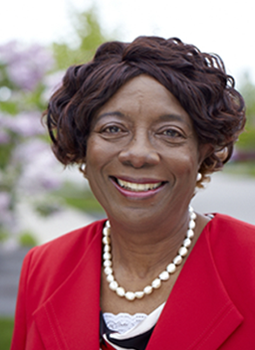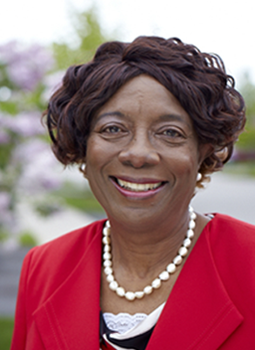RNAO’s Fall Tour is always inspiring for me and our CEO Doris Grinspun. We get the opportunity to visit with many of you, where you practise and in the communities you call home across Ontario.
This year, my first stop was Sault Ste. Marie. Liliana Bressan, Algoma chapter president and Region 11 board representative, accompanied me to four different sites. We began at the ARCH Hospice, which provides services for 200 patients of all ages. It is staffed by knowledgeable, compassionate, multi-disciplinary health-care professionals and volunteers who offer client-centred care.
The intake co-ordinator took us on a tour of this beautiful, peaceful facility surrounded by large trees and gardens. I was impressed by those who gathered to hear about the role of RNAO’s board of directors and the association’s strategic directions (commonly known as the four ENDs). I also talked about our policy work and the platform of recommendations we put forth during the federal election.
Connecting with members is always energizing. I am grateful for our discussions.
Attendees wanted to know more about Ontario Health Teams (OHT), and I shared details of RNAO’s involvement, including the series of webinars created to provide nurses with more information about OHTs. Our involvement with this initiative has since grown. We have partnered with four OHTs that have signed agreements to implement RNAO best practice guidelines (BPG); two mandatory (person- and family-centred care and care transitions) and others of their choosing that will help improve patient outcomes in their particular setting.
Other site visits included Algoma Public Health, the Superior Family Health Team and the Davey Home, a long-term care home with 372 beds that is also an RNAO Best Practice Spotlight Organization (BPSO). During these visits, I met with RNs, NPs and nursing students. In our discussions, they reinforced the need for more NPs in the community, RN employment opportunities, and broader scopes of practice. These are issues RNAO has advocated strongly on, and that advocacy will continue, especially in primary care.
One timely issue that came up at the long-term care home is one we all know well: funding drops for homes that implement BPGs that improve care and health outcomes. It’s an antiquated model of funding that doesn’t serve residents, families, or the health system at large. That’s why this model needs to change (read more HERE).
My visit to Sault Ste. Marie ended with a meeting of Algoma chapter members. We had an interactive and enjoyable evening with opportunities to network over a sumptuous supper.
My next tour stop was in Mississauga, where I met members of the Peel chapter, the Community Health Nurses’ Initiatives Group, and the chief nurse for Peel Public Health. Members were engaging and enthusiastic, asking questions and using the evening as an opportunity to network. I heard stories about the positive ways nurses support each other. We talked about the importance of public health in our communities, which, as we know today, is even more important with news of the COVID-19 outbreak.
We also talked about ensuring the placement of RNs from home care with the development of OHTs. I spoke about RNAO’s advocacy on this issue, including the importance of having home care nurses included in a robust primary care sector, as outlined in our Enhancing Community Care for Ontarians (ECCO) report. Incidentally, substantive additions have been made to this report, which will be released on May 12, during Nursing Week 2020.
I ended this year’s tour in Barrie, where I met members of the South Simcoe chapter. The importance of mentoring and supporting novice nurses was a big topic, as was facilitating transitions in patient care from acute to rehab/home care. The latter is an issue we believe will be addressed in the health system transformation work currently underway in Ontario, which RNAO is proud to be a part of. Our advocacy for RNs and NPs, for stronger primary care at the centre of our system, and for seamless care in all sectors will undoubtedly result in better patient and family experiences.
Connecting with members is always energizing. I am grateful for our discussions. And you can count on your professional association to be your voice on the important issues you raised on each stop of this year’s Fall Tour (visit our Facebook gallery for more photos HERE).
I want to express my sincere thanks to all chapter members I had a chance to meet, and to my hosts for planning these visits.


